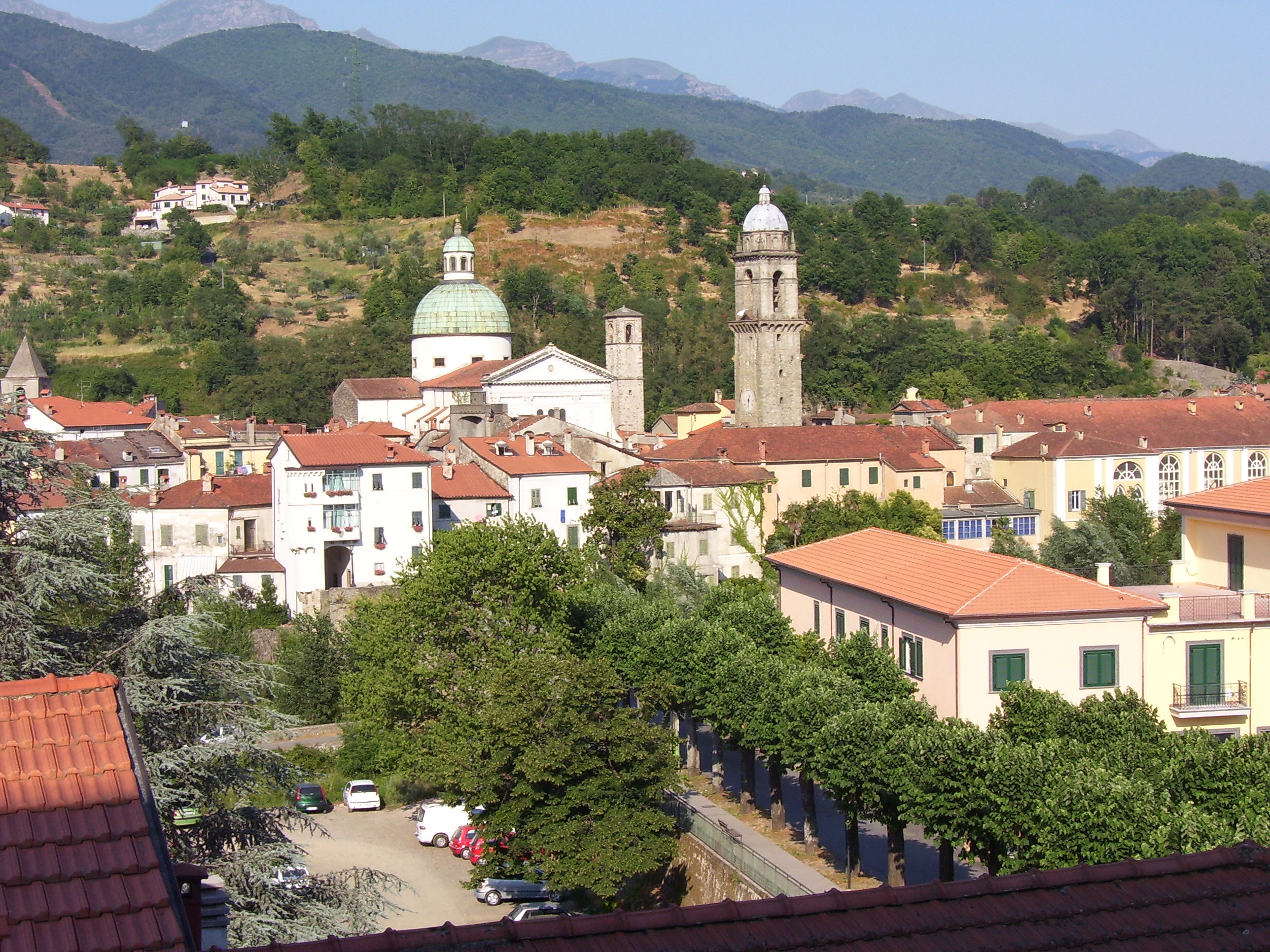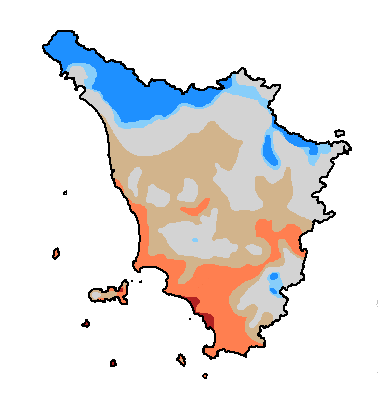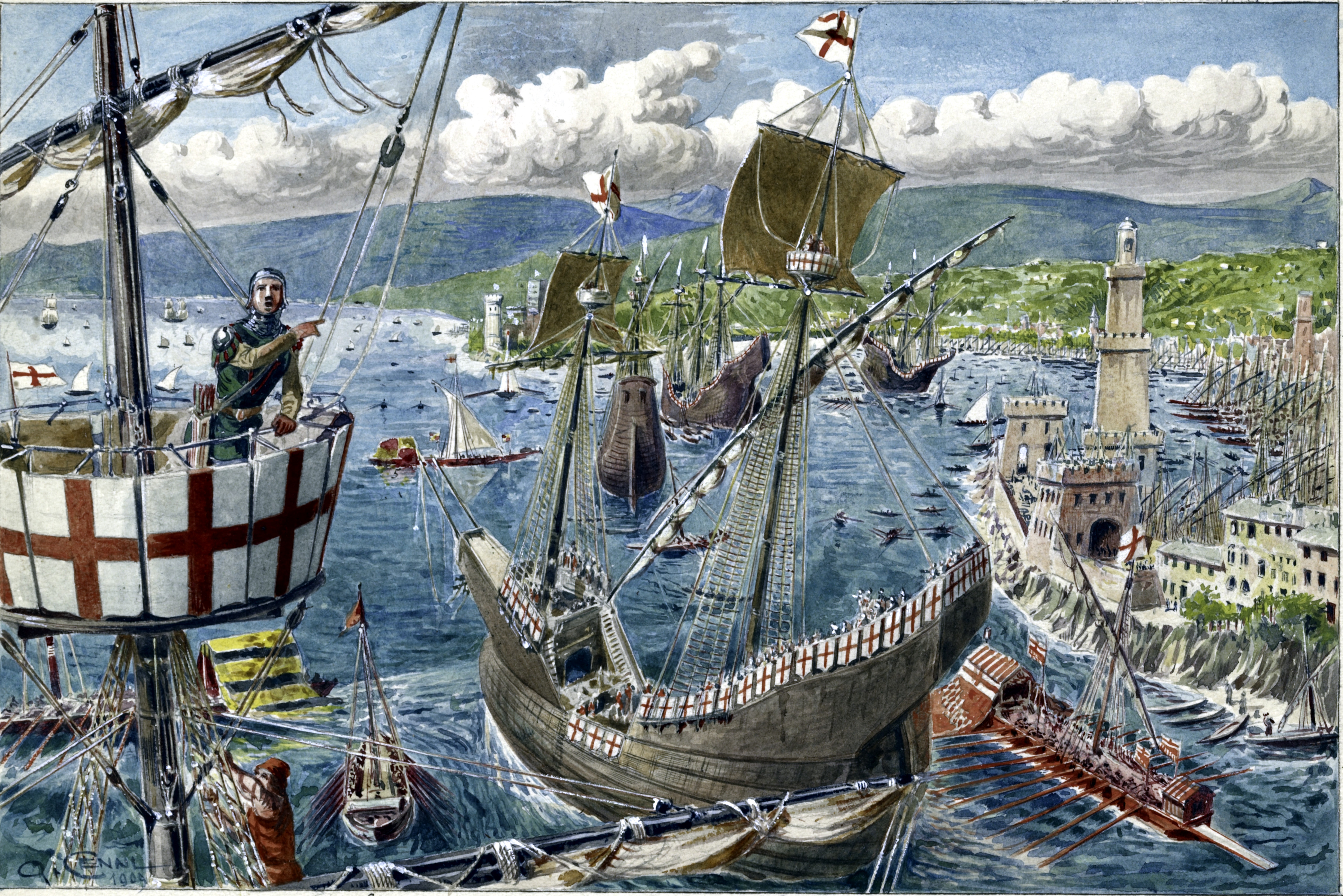|
Pontremoli
Pontremoli (; local egl, Pontrémal; la, Apua) is a small city, ''comune'' former Latin Catholic bishopric in the province of Massa and Carrara, Tuscany region, central Italy. Literally translated, Pontremoli means "Trembling Bridge" (from ''ponte'' "bridge" and ''tremare'' "to tremble"), as the commune was named after a prominent bridge across the Magra. Pontremoli is in the upper valley of the Magra, northeast of La Spezia by rail and south-southwest of Parma. History Pontremoli is believed to have been first settled around 1000 BC. It was known in Roman times as Apua. The commune later became an independent municipality in 1226 thanks to Frederick II who chartered the free municipality, partly because of its mountainous terrain. This terrain in the valley of the Magra also made Pontremoli a target for numerous conquests from rival Italian and foreign lords. Pontremoli was controlled by various aristocratic families, including the Malaspina (in 1319) and the Antelminelli ... [...More Info...] [...Related Items...] OR: [Wikipedia] [Google] [Baidu] |
Apuani
The Apuani were one of the most formidable and powerful of the Ligurian tribes who lived in ancient north-western Italy, mentioned repeatedly by Livy. From the circumstances related by him, it appears that they were the most easterly of the Ligurian tribes, who inhabited the lofty group of mountains bordering on Etruria, and appear to have occupied the valleys of the Macra (modern Magra) and Ausar (modern Serchio). Although they extended eastwards along the chain of the Apennines to the frontiers of the Arretines and the territory of Mutina (modern Modena) and Bononia (modern Bologna), the upper valley of the Macra about Pontremoli, including the area later known as Lunigiana where the Tuscan towns of Aulla, Fivizzano, Fosdinovo, Villfranca and Pontremoli are now found, and the adjoining Upper Garfagnana and Ligurian districts of Sarzana and La Spezia were their center. To oppose their inroads, the Romans generally made Pisae (modern Pisa) the headquarters of one of their armies, ... [...More Info...] [...Related Items...] OR: [Wikipedia] [Google] [Baidu] |
Grand Duchy Of Tuscany
The Grand Duchy of Tuscany ( it, Granducato di Toscana; la, Magnus Ducatus Etruriae) was an Italian monarchy that existed, with interruptions, from 1569 to 1859, replacing the Republic of Florence. The grand duchy's capital was Florence. In the 19th century the population of the Grand Duchy was about 1,815,000 inhabitants. Having brought nearly all Tuscany under his control after conquering the Republic of Siena, Cosimo I de' Medici, was elevated by a papal bull of Pope Pius V to Grand Duke of Tuscany on August 27, 1569. The Grand Duchy was ruled by the House of Medici until the extinction of its senior branch in 1737. While not as internationally renowned as the old republic, the grand duchy thrived under the Medici and it bore witness to unprecedented economic and military success under Cosimo I and his sons, until the reign of Ferdinando II, which saw the beginning of the state's long economic decline. It peaked under Cosimo III. Francis Stephen of Lorraine, a cogna ... [...More Info...] [...Related Items...] OR: [Wikipedia] [Google] [Baidu] |
Apennins
Apennins was a department of the First French Empire of 1805-1814 in present-day Italy. Named after the Apennine Mountains, it originated on 6 June 1805, after France had directly annexed the Ligurian Republic (formerly the Republic of Genoa) on 4 June 1805. Its capital was Chiavari. Disbanded after the defeat of Napoleon in 1814, the department again became part of the briefly restored Ligurian Republic, but the Congress of Vienna awarded the old territory of Genoa to the Kingdom of Sardinia (December 1814). the area of the former département forms parts of the Italian provinces of Genoa, La Spezia, Massa-Carrara and Parma. Subdivisions The department was subdivided into the following arrondissements and cantons (situation in 1812):Almanach Impérial an bissextil MDCCCXII p. 368-369, accessed in [...More Info...] [...Related Items...] OR: [Wikipedia] [Google] [Baidu] |
Tuscany
it, Toscano (man) it, Toscana (woman) , population_note = , population_blank1_title = , population_blank1 = , demographics_type1 = Citizenship , demographics1_footnotes = , demographics1_title1 = Italian , demographics1_info1 = 90% , demographics1_title2 = , demographics1_info2 = , demographics1_title3 = , demographics1_info3 = , timezone1 = CET , utc_offset1 = +1 , timezone1_DST = CEST , utc_offset1_DST = +2 , postal_code_type = , postal_code = , area_code_type = ISO 3166 code , area_code = IT-52 , blank_name_sec1 = GDP (nominal) , blank_info_sec1 = €118 billion (2018) , blank1_name_sec1 = GDP per capita , blank1_info_sec1 = €31,500 (2018) , blank2_name_sec1 = HDI (2019) , blank2_info_sec1 = 0.907 • 6th of 21 , blank_name_sec2 = NUTS Region , blank_info_sec2 ... [...More Info...] [...Related Items...] OR: [Wikipedia] [Google] [Baidu] |
Province Of Massa And Carrara
The province of Massa-Carrara ( it, provincia di Massa-Carrara) is a province in the Tuscany region of central Italy. It is named after the provincial capital Massa, and Carrara, the other main town in the province. History The province of "Massa e Carrara" was born in 1859 from the separation of the Lunigiana and the Garfagnana from the Duchy of Modena. Originally it was composed of three ''circondari'': I° "Circondario of Massa and Carrara" (a group of seven districts divided in 14 municipalities), II° "Circondario" of Castelnuovo Garfagnana (four districts divided in 17 municipalities), III° "Circondario" of Pontremoli (three districts divided into six municipalities). Until the census of 1861, the province appears as part of ''Compartimento territorial Modena, Reggio and Massa'', but since the census of the population of 1871 it has been counted as part of Tuscany. Later, with the "Regio Decreto n. 1913 of September 2, 1923", the municipalities of Calice al Cornoviglio ... [...More Info...] [...Related Items...] OR: [Wikipedia] [Google] [Baidu] |
Saint Geminianus
Saint Geminianus (also known as Saint Geminian, or Saint Gimignano) was a fourth-century deacon who became Bishop of Modena. He is mentioned in the year 390, when he participated in a council called by Saint Ambrose in Milan. From his name, it has been deduced that Geminianus probably belonged to the caste of Roman senators. Nothing more is directly known about him, and all information regarding his life comes from much later biographies. It is said that when Saint Athanasius was entering exile in France, he passed through Modena and was received kindly by Geminianus. Saint John Chrysostom later received the same hospitality. Saint Geminianus opposed Arianism and Jovinianism. He probably died on 31 January 397. Veneration Traces of his veneration have always been present in Modena. As early as the fifth century a church had been erected over his tomb, contiguous with the present cathedral and outside the center of the original Roman town. In the early Middle Ages, moreover, ... [...More Info...] [...Related Items...] OR: [Wikipedia] [Google] [Baidu] |
Province Of Massa And Carrara
The province of Massa-Carrara ( it, provincia di Massa-Carrara) is a province in the Tuscany region of central Italy. It is named after the provincial capital Massa, and Carrara, the other main town in the province. History The province of "Massa e Carrara" was born in 1859 from the separation of the Lunigiana and the Garfagnana from the Duchy of Modena. Originally it was composed of three ''circondari'': I° "Circondario of Massa and Carrara" (a group of seven districts divided in 14 municipalities), II° "Circondario" of Castelnuovo Garfagnana (four districts divided in 17 municipalities), III° "Circondario" of Pontremoli (three districts divided into six municipalities). Until the census of 1861, the province appears as part of ''Compartimento territorial Modena, Reggio and Massa'', but since the census of the population of 1871 it has been counted as part of Tuscany. Later, with the "Regio Decreto n. 1913 of September 2, 1923", the municipalities of Calice al Cornoviglio ... [...More Info...] [...Related Items...] OR: [Wikipedia] [Google] [Baidu] |
Magra
__NOTOC__ The Magra is a long river of Northern Italy, which runs through Pontremoli, Filattiera, Villafranca in Lunigiana and Aulla in the province of Massa-Carrara (Tuscany); Santo Stefano di Magra, Vezzano Ligure, Arcola, Sarzana and Ameglia in the province of La Spezia (Liguria). In Roman times, it was known as the Macra and marked the eastern boundary of the territory of Liguria. The river's drainage basin occupies around . Its most important tributary is the Vara which joins the Magra from the right within the commune of Santo Stefano di Magra. Caprigliola bridge collapse In April 2020 a 260 metre long road bridge across the Magra at Albiano Magra near Aulla collapsed. Very few vehicles were using the bridge at the time due to the coronavirus lockdown then in force, and only two people were injured. Regional Natural Park of Montemarcello-Magra-Vara Since 1995 an area of surrounding the Magra and Vara rivers is protected by a natural park of the '' reg ... [...More Info...] [...Related Items...] OR: [Wikipedia] [Google] [Baidu] |
House Of Sforza
The House of Sforza () was a ruling family of Renaissance Italy, based in Milan. They acquired the Duchy of Milan following the extinction of the Visconti family in the mid-15th century, Sforza rule ending in Milan with the death of the last member of the family's main branch in 1535. History The first son of Muzio Attendolo Sforza, Francesco I Sforza, married Bianca Maria (1425–1468) in 1441. She was the daughter and only heir of the last Duke of Milan, (Filippo Maria Visconti). He thus acquired the title of Duke of Milan (1450–1466), ruled Milan for 16 years, and made the Sforzas the heirs of the house of Visconti. The family also held the seigniory of Pesaro, starting with Muzio Attendolo's second son, Alessandro (1409–1473). The Sforza held Pesaro until 1512, after the death of Costanzo II Sforza. Muzio's third son, Bosio (1411–1476), founded the branch of Santa Fiora, who held the title of count of Cotignola; the Sforza ruled the small county of Santa Fiora in ... [...More Info...] [...Related Items...] OR: [Wikipedia] [Google] [Baidu] |
Genoa
Genoa ( ; it, Genova ; lij, Zêna ). is the capital of the Regions of Italy, Italian region of Liguria and the List of cities in Italy, sixth-largest city in Italy. In 2015, 594,733 people lived within the city's administrative limits. As of the 2011 Italian census, the Province of Genoa, which in 2015 became the Metropolitan City of Genoa, had 855,834 resident persons. Over 1.5 million people live in the wider metropolitan area stretching along the Italian Riviera. On the Gulf of Genoa in the Ligurian Sea, Genoa has historically been one of the most important ports on the Mediterranean Sea, Mediterranean: it is currently the busiest in Italy and in the Mediterranean Sea and twelfth-busiest in the European Union. Genoa was the capital of Republic of Genoa, one of the most powerful maritime republics for over seven centuries, from the 11th century to 1797. Particularly from the 12th century to the 15th century, the city played a leading role in the commercial trade in Euro ... [...More Info...] [...Related Items...] OR: [Wikipedia] [Google] [Baidu] |
Charles VIII Of France
Charles VIII, called the Affable (french: l'Affable; 30 June 1470 – 7 April 1498), was King of France from 1483 to his death in 1498. He succeeded his father Louis XI at the age of 13.Paul Murray Kendall, ''Louis XI: The Universal Spider'' (New York: W. W. Norton & Company, 1971), pp. 373–374. His elder sister Anne acted as regent jointly with her husband Peter II, Duke of BourbonStella Fletcher, ''The Longman Companion to Renaissance Europe, 1390–1530'', (Routledge, 1999), 76. until 1491 when the young king turned 21 years of age. During Anne's regency, the great lords rebelled against royal centralisation efforts in a conflict known as the Mad War (1485–1488), which resulted in a victory for the royal government. In a remarkable stroke of audacity, Charles married Anne of Brittany in 1491 after she had already been married by proxy to the Habsburg Holy Roman Emperor Maximilian I in a ceremony of questionable validity. Preoccupied by the problematic succession in th ... [...More Info...] [...Related Items...] OR: [Wikipedia] [Google] [Baidu] |
Holy Roman Empire
The Holy Roman Empire was a political entity in Western, Central, and Southern Europe that developed during the Early Middle Ages and continued until its dissolution in 1806 during the Napoleonic Wars. From the accession of Otto I in 962 until the twelfth century, the Empire was the most powerful monarchy in Europe. Andrew Holt characterizes it as "perhaps the most powerful European state of the Middle Ages". The functioning of government depended on the harmonic cooperation (dubbed ''consensual rulership'' by Bernd Schneidmüller) between monarch and vassals but this harmony was disturbed during the Salian period. The empire reached the apex of territorial expansion and power under the House of Hohenstaufen in the mid-thirteenth century, but overextending led to partial collapse. On 25 December 800, Pope Leo III crowned the Frankish king Charlemagne as emperor, reviving the title in Western Europe, more than three centuries after the fall of the earlier ancient West ... [...More Info...] [...Related Items...] OR: [Wikipedia] [Google] [Baidu] |



